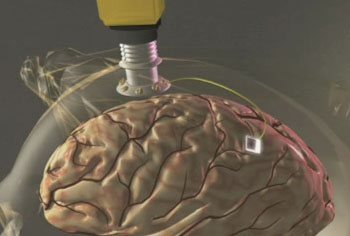Tuesday, May 21, 2013 | by admin
 I found some more information about the HIVE project. A presentation was given November of last year discussing the potential of computer controlled brain stimulation (see PDF). The researchers definitely appear to have an eye towards some more futurist speculative uses of the technology.
I found some more information about the HIVE project. A presentation was given November of last year discussing the potential of computer controlled brain stimulation (see PDF). The researchers definitely appear to have an eye towards some more futurist speculative uses of the technology.10 Mapping our brains to computers (the singularity)There is also a new article in AlphaGalileo about it as well. Here's an excerpt (translated from spanish);
9 Jacking in (invasive interaction)
8 Non-invasive Brain 2 Machine + Machine 2 Brain interaction
7 Immersion (HMD/CAVE + haptics + ...) (also MR/AR) using natural senses
One case of possible application that this (technology) poses to the future researcher Pablo de Olavide is in the treatment of some types of deafness. In this line, the device developed could be applied within a few years to develop a stimulus pattern that simulates human speech or sound, for people who can not hear through the ear, can get the information directly into your brain. In these cases, the inner ear that fails, not the brain, so the device could be applied to stimulate the brain related to hearing," concludes the researcher.Beaming sensory experiences into the brain could be helpful for those with certain disabilities. Scientists have also been utilizing brain research in order to facilitate the development of more engrossing and authentic virtual realities. Due to increases in GPU power, virtual environments will likely become more representative of actual real world circumstances as time goes forward. More theoretical technology might eventually enable computer generated sensations to be directly transmitted into the minds of normal people. I think some intriguing things could happen as this field matures. Being able to generate any sort of qualia on command via a digital program is basically the ultimate end point. Coupling that ability with more exact methods of fine tuning how the brain actually perceives qualia could usher in a transformative shift in consciousness.
Labels: Brain-Computer Interface